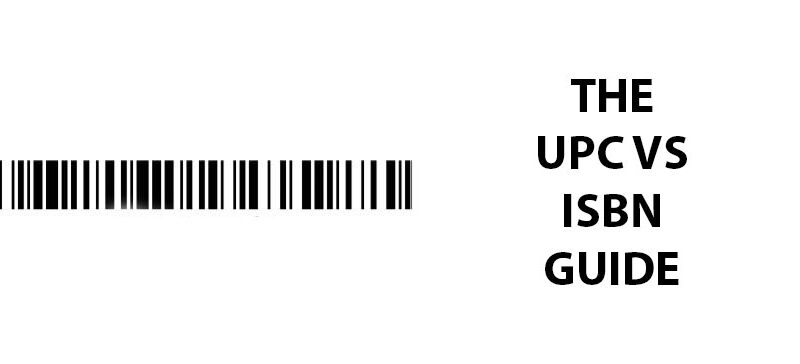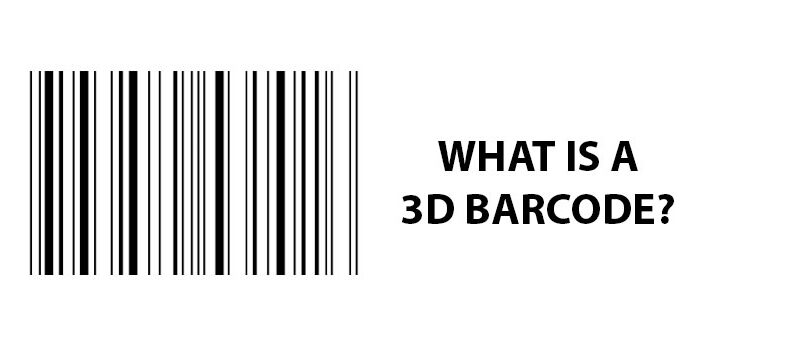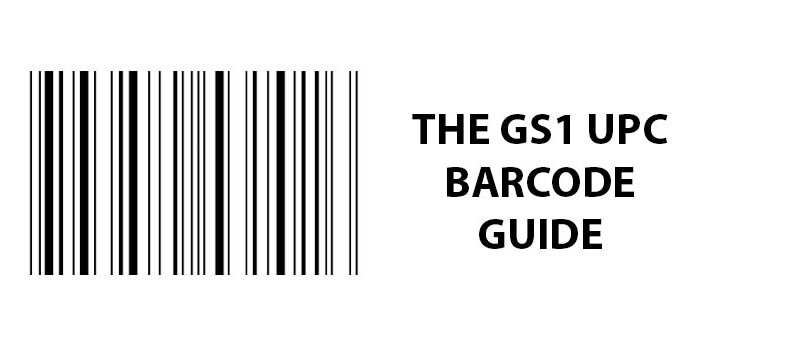UPC and ISBN are two common unique identifiers used to track products. So what’s the difference between UPC vs ISBN? A UPC, or Universal Product Code, is used to identify a wide variety of consumer goods in stores and online. On the other hand, an ISBN, or International Standard Book Number, is used specifically for books and other literary publications.
When designing barcode labels for your business operations, it’s essential to understand the difference between the two. In this guide, we’ll explain what UPC and ISBN are, how they compare, and practical applications of the two.
What Is UPC?
A UPC is a type of 12-digit, numerical code that’s widely used for tracking and identifying products in retail stores. UPC was created in 1974 and has been in use in the US and Canadian companies since then.
The structure of a UPC contains the following:
- Company Prefix: A 6-digit prefix that identifies the manufacturer or brand owner.
- Product Numbers: The next 5 numbers, assigned to the specific product.
- Check Digit: The last digit, used to check the barcode for any errors.
Although UPC barcodes are mostly used by US and Canadian companies, their standardized format means that they are universally recognized. GS1, a global barcode standards organization, manages UPC and other barcodes. GS1 assigns manufacturer codes to businesses that register and ensures that UPCs are recognized and used in retail and supply chains across the world.
What Is ISBN?
An ISBN is a unique identifier assigned to books and other publications. It helps publishers, booksellers, libraries, and readers quickly identify and manage books globally. ISBNs can be 10 or 13 digits long. The 10-digit barcodes were standard before 2007, and the 13-digit barcodes are the current standard. However, 10-digit ISBNs can be converted to 13-digit ISBNs.
The structure of an ISBN contains the following:
- Prefix: Usually “978” or “979” for books.
- Registration Group: Identifies the country, region, or language group.
- Registrant Element: Identifies the publisher.
- Publication: A unique number for the specific title or edition.
- Check digit: Use to make sure the number is valid.
ISBNs make cataloging and inventory management more efficient in libraries and bookstores around the world. They prevent confusion by distinguishing between books with similar titles or authors as well as between variations of the same book. You can usually find the ISBN on the back cover of a book or on its copyright page.
How They’re Similar
Now that we’ve explained each code, let’s talk about how UPC vs ISBN are similar. Both codes are used similarly to identify products, though their applications are distinct. Here’s how UPC and ISBN are similar:
- Unique identification: Both UPCs and ISBNs uniquely identify items. UPCs are used for general products, such as groceries, electronics, toys, etc. ISBNs are used to identify books and other publications.
- Global standards: Both are standardized systems that are used internationally for efficient product tracking and management. UPC is managed by GS1 and ISBN is managed by the International ISBN Agency.
- Purpose: Both codes are used to streamline inventory management, sales processing, and product cataloging in retail and distribution systems.
- Scannable: Both UPCs and ISBNs can be encoded into a scannable barcode format.
- Fixed format: Both systems have a fixed format with a fixed number of digits. UPCs have 12 digits, while ISBNs have 13 digits.
How They’re Different
When it comes to UPC vs ISBN, there are a number of differences that set these two codes apart. Here’s how they differ:
- Industry: Although UPCs and ISBNs have a similar purpose, they’re used in different industries. UPCs are used to identify numerous kinds of retail products. On the other hand, ISBNs are only used for books, eBooks, and other publications.
- Structure: UPCs have a 12-digit structure, with a manufacturer prefix, product number, and check digit at the end. ISBNs have a 13-digit code with segments for the country/language group, publisher, title, and a check digit.
- Origin: UPC was created in 1974 in the United States and has been used mostly in the US and Canada since then. It has since become a universally recognized code. ISBN, on the other hand, was created in 1970 with the specific purpose to be used globally for books.
- Governing Authority: UPC is managed globally by GS1, which oversees standards for numerous types of barcodes. ISBN is managed by the International ISBN Agency.
- Scope of information: UPCs do not provide detailed bibliographic data. Rather, they simply identify the product and link it to the retailer’s database. ISBNs, on the other hand, encode information about the book’s language, publisher, and edition, which is useful for libraries, publications, and academic institutions.
When to Use UPC
Deciding whether to use UPC vs ISBN is fairly simple. You should use UPC when you need to uniquely identify and sell physical products in retail or online marketplaces. Here’s a number of ways to use UPCs:
- Selling consumer goods: If you’re selling consumer goods, you’ll need a UPC to sell your products in most brick-and-mortar stores. If you’re selling on platforms like Amazon, eBay, and Walmart, you’ll likely need UPCs for your product listings.
- Inventory management: You can use UPCs to track and manage stock levels. UPCs integrate with most inventory management systems easily and make inventory counts easy.
- Products with variants: You’ll need a separate UPC for each variation of a product. For example, if you’re selling lotions with three unique scents, you’ll need a UPC code for each.
- Selling wholesale: Distributors and retailers usually require UPCs on products to streamline stocking and sales processes.
- Improve checkout efficiency: UPCs enable fast and accurate scanning at the point of sale. With a simple scan of the UPC barcode, the POS system will bring up the product and price.
When to Use ISBN
You should use an ISBN when you are publishing, selling, or distributing books, eBooks, audiobooks, and other publications. Here’s a number of ways to use ISBNs:
- Publishing books: Use an ISBN on printed books to identify the title, edition, and format. Each version of a book (such as hardcover vs paperback) requires its own unique ISBN.
- Digital publications: Use an ISBN on eBooks and audiobooks, especially if sold through online platforms like Amazon Kindle or Audible. Each file format (such as EPUB, PDF, or MOB, may require a separate ISBN, depending on the distributor’s requirements.
- Academic or professional publications: Use ISBNs on journals, research publications, and educational materials meant to be cataloged in libraries or academic institutions.
- Libraries: Libraries use ISBNs to catalog their collection as well as manage the check-in/check-out process.
Practical Applications of UPCs
UPCs are widely used in a variety of industries to streamline operations, track inventory, and facilitate sales. Here are some specific examples of practical applications of UPCs:
- Retail: UPCs are scanned at checkout to retrieve the price of items like canned soup, fresh produce, or frozen meals.
- E-Commerce: Sellers use UPCs on platforms like eBay and Amazon to list products on these platforms. For example, a UPC helps identify the specific model of headphones among thousands of listings.
- Restaurants: Pre-packaged sauces or ingredients used in food prep often carry UPCs for supplier tracking.
- Healthcare: Medical supplies like surgical gloves or bandages often have UPC labels that can be scanned for accurate inventory counts.
- Electronics: UPCs help differentiate models of gadgets like smartphones, laptops, and accessories.
- Manufacturing: UPCs are used to label raw materials for tracking during production.
- Automotive: Using UPCs on car parts simplifies inventory management and ensures compatibility for specific models. For example, a brake pad with a unique UPC can help prevent mismatches during repairs.
Practical Applications of UPCs
Since its creation in 1970, ISBNs have become vital for cataloging, tracking, and selling books and publications. Here are specific examples of how ISBNs are used:
- Publishing: Every new edition, format, or version of a book is assigned a unique ISBN to differentiate it from other similar books. For example, a novel with hardcover, paperback, and eBook formats will have three different ISBNs.
- Bookstores: Bookstores use ISBNs to track stock, reorder books, and scan the ISBN barcode during checkout.
- E-commerce: Platforms like Amazon, Barnes & Noble, and Apple Books require ISBNs to list books for sale.
- Libraries: Libraries use ISBNs to organize books in their collection and make them easy to search for in databases. ISBNs can also be used to facilitate interlibrary loans.
- Academic institutions: Universities and schools list textbooks in course syllabi using ISBNs to ensure students buy the correct editions.
- Academic publishing: ISBNs are used in bibliographies to reference books used in research papers precisely.
- Rights and licensing: ISBNs help publishers and authors track the sale of rights for translations or adaptations. For example, a publisher would use the ISBN to manage and promote the Spanish edition of an English-language book.
UPC vs ISBN Conclusion
When it comes to UPC vs ISBN, both unique identifiers have a similar purpose: tracking products and managing inventory. However, they are used in unique industries. UPCs can be used on just about any retail product that is not a book, while ISBNs are used for books, magazines, journals, and other publications.
Do you need custom UPC or ISBN barcode labels? You can count on Coast Label for durable labels that won’t let you down. We’ll help you through every step of the process to create a custom label that works for your unique business. Contact us today to learn more!



